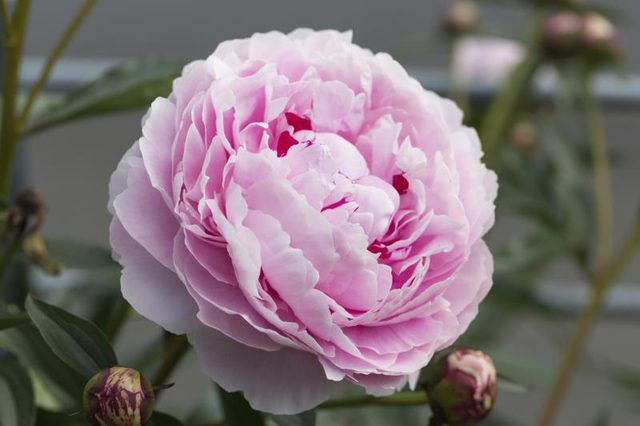Bulbs
Flower Basics
Flower Beds & Specialty Gardens
Flower Garden
Garden Furniture
Garden Gnomes
Garden Seeds
Garden Sheds
Garden Statues
Garden Tools & Supplies
Gardening Basics
Green & Organic
Groundcovers & Vines
Growing Annuals
Growing Basil
Growing Beans
Growing Berries
Growing Blueberries
Growing Cactus
Growing Corn
Growing Cotton
Growing Edibles
Growing Flowers
Growing Garlic
Growing Grapes
Growing Grass
Growing Herbs
Growing Jasmine
Growing Mint
Growing Mushrooms
Orchids
Growing Peanuts
Growing Perennials
Growing Plants
Growing Rosemary
Growing Roses
Growing Strawberries
Growing Sunflowers
Growing Thyme
Growing Tomatoes
Growing Tulips
Growing Vegetables
Herb Basics
Herb Garden
Indoor Growing
Landscaping Basics
Landscaping Patios
Landscaping Plants
Landscaping Shrubs
Landscaping Trees
Landscaping Walks & Pathways
Lawn Basics
Lawn Maintenance
Lawn Mowers
Lawn Ornaments
Lawn Planting
Lawn Tools
Outdoor Growing
Overall Landscape Planning
Pests, Weeds & Problems
Plant Basics
Rock Garden
Rose Garden
Shrubs
Soil
Specialty Gardens
Trees
Vegetable Garden
Yard Maintenance
How to Plant a Peony
How to Plant a Peony. With large, lush flowers, peonies look as if they should be more difficult to grow than they actually are. When well-planted, they will reward you with years of bounteous blooms in spring or early summer. Herbaceous peonies grow from 2 to 4 feet; tree peonies from 2 to 6 feet; intersectional hybrids -- generally topping out at...

With large, lush flowers, peonies look as if they should be more difficult to grow than they actually are. When well-planted, they will reward you with years of bounteous blooms in spring or early summer. Herbaceous peonies grow from 2 to 4 feet; tree peonies from 2 to 6 feet; intersectional hybrids -- generally topping out at 3 feet -- are crosses between the previous two types. Peonies prefer climates with cold winters, such as those in U.S. Department of Agriculture plant hardiness zones 3 through 8, and the correct method of planting varies according to which type you are setting out.
Peony Types
Herbaceous and intersectional peonies usually are sold as bare-root crowns with at least three eyes -- the eyes being the growing points atop the crown that resemble small pink or white buds. Tree peonies will have both roots and woody above-ground shoots when purchased.
All peonies should be set out in autumn, before your first hard frost and at least six weeks before your ground freezes. In most of the U.S., that makes late September or October the correct planting time. You can plant potted peonies in spring, but they may be slower to bloom than those set out in autumn.
Prepare Your Location
Choose a location with a soil pH between 6.5 and 7.5 where the plants will receive full sun or at least six hours of sunlight per day, and five hours for tree peonies. If the ground is mostly clay or sand, dig 2 inches of compost or composted manure into the soil to improve its consistency.
For each peony, excavate a hole about 1 to 2 feet deep and the same width, spacing those holes 3 to 4 feet apart. Into the bottom of each hole, sprinkle 1/2 cup of bonemeal, 1/2 cup superphosphate and 1 cup of a 5-5-5 organic fertilizer or 1/2 cup of a 10-10-10 chemical one.
Plant Peony Roots
After scratching the supplements you choose into the bottom of the hole, backfill some of the removed soil in as well, and place the root crown atop the mound. When that crown is positioned properly, the eyes of a herbaceous or intersectional peony should be facing upward near the surface of the soil.
The herbaceous peony's eyes should be no more than 2 inches beneath the soil in cold zones and 1 inch in warmer ones. For an intersectional peony, make that 3 inches deep in the lower zones and 2 inches deep in the higher ones. A grafted tree peony, which has shoots rather than eyes, should be planted with its graft -- the horizontal ridge on the stem -- 4 to 8 inches beneath the surface of the soil. A tree peony growing on its own roots should be positioned with the crown of those roots 2 inches beneath the soil.
Protect the Peony Roots
After returning the soil to the hole around the roots and patting it firmly into place, water the peony well, and continue to ensure that it receives at least 1 inch of water per week. Wait until after the ground freezes to mulch the plant with 2 to 3 inches of pine needles or shredded bark. Be sure to remove that mulch in the spring, because peonies won’t bloom if their buds are buried too deeply. If you must mulch the plant in subsequent years, keep the mulch around the outer edge of the planting area, do not put it over the surface of the crown.
Peonies Planted in Containers
To grow a peony in an 18- to 24-inch-diameter container, fill the container with a mix of 2 parts garden soil or bagged topsoil and 1 part perlite, and position the root crown or plant at the same depth you would place it in the ground -- but without the fertilizers beneath it. Instead, sprinkle 1 tablespoon of a 12-12-12 slow-release plant food on the surface of the soil in early spring each year. Make sure you use a container with drainage holes in the bottom.
To keep the roots from eventually circling the container, you may wish to plant them in a root control bag first and place that bag inside the pot. During winter, store the potted peony in a cool but above-freezing location, such as an unheated garage.